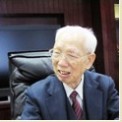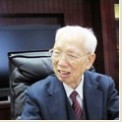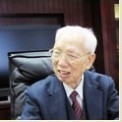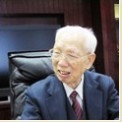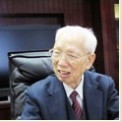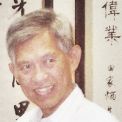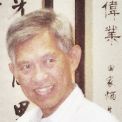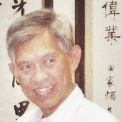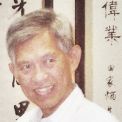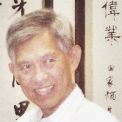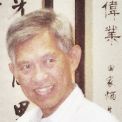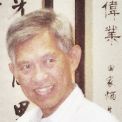-
History & Society
- Education in Pre-war Hong Kong
- History of Taikoo Sugar Refinery
- Hong Kong Products Exhibition
- Local Festivals Around the Year
- Post-war Industries
- Pre-war Industry
- The Hong Kong Jockey Club Archives
- Tin Hau Festival
- Memories We Share: Hong Kong in the 1960s and 1970s
- History in Miniature: The 150th Anniversary of Stamp Issuance in Hong Kong
- A Partnership with the People: KAAA and Post-war Agricultural Hong Kong
- The Oral Legacies (I) - Intangible Cultural Heritage of Hong Kong
- Hong Kong Currency
- Hong Kong, Benevolent City: Tung Wah and the Growth of Chinese Communities
- The Oral Legacies Series II: the Representative List of the Intangible Cultural Heritage of Hong Kong
- Braving the Storm: Hong Kong under Japanese Occupation
- A Century of Fashion: Hong Kong Cheongsam Story
Geography & EnvironmentArt & Culture- Calendar Posters of Kwan Wai-nung
- Festival of Hong Kong
- Ho Sau: Poetic Photography of Daily Life
- Hong Kong Cemetery
- Sketches by Kong Kai-ming
- The Culture of Bamboo Scaffolding
- The Legend of Silk and Wood: A Hong Kong Qin Story
- Journeys of Leung Ping Kwan
- From Soya Bean Milk To Pu'er Tea
- Applauding Hong Kong Pop Legend: Roman Tam
- 他 FASHION 傳奇 EDDIE LAU 她 IMAGE 百變 劉培基
- A Eulogy of Hong Kong Landscape in Painting: The Art of Huang Bore
- Imprint of the Heart: Artistic Journey of Huang Xinbo
- Porcelain and Painting
- A Voice for the Ages, a Master of his Art – A Tribute to Lam Kar Sing
- Memories of Renowned Lyricist: Richard Lam Chun Keung's Manuscripts
- Seal Carving in Lingnan
- Literary Giant - Jin Yong and Louis Cha
Communication & Media- Hong Kong Historical Postcards
- Shaw Brothers’ Movies
- Transcending Space and Time – Early Cinematic Experience of Hong Kong
- Remembrance of the Avant-Garde: Archival Camera Collection
- Down Memory Lane: Movie Theatres of the Olden Days
- 90 Years of Public Service Broadcasting in Hong Kong
- Multifarious Arrays of Weaponry in Hong Kong Cinema
-
History & SocietyGeography & EnvironmentArt & Culture
-
View Oral History RecordsFeatured StoriesAbout Hong Kong Voices
-
Hong Kong Memory
- Collection
- All Items
- Oral History
Recently VisitedOral History
Impressed by KP Tin’s determination, ICI gave him tremendous support by referring him to officials of the Lands Department to seek help in finding suitable sites for setting up plants. At first KP Tin chose Lam Tsuen, Tai Po, NT, but later gave up due to traffic problems and fire regulations. KP Tin made many efforts in locating a site but in vain. After a series of twists and turns, he gained the support of Chan Yat-sun, Chairman of Rural Committee, and bought land in Tuen Mun for reclamation and setting up plants.
Thanks to Chan Yat-sun, his connections with different departments were all opened up, and the progress was satisfactory. Having been in Hong Kong for 2 or 3 months, KP Tin met Chan Yat-sun through the Vice-chairman of The Chinese Manufacturers' Association of Hong Kong, who ran a Chinese checkers factory in Tuen Mun. Plastic factories needed lots of land, which was as expensive as $50 per sq. ft. in the urban industrial areas. The land in Tuen Mun originally belonged to Chan Yat-sun, and had been permitted by the Government to change to industrial land. Its original price was 2 dollars per sq. ft. It was later sold at $0.9. KP Tin bought 300,000 sq. ft. from Chan Yat-sun, his best friend. Chan Yat-sun appreciated KP Tin and gave him full support. The land revenue that Chan Yat-sun gained also greatly benefited his own career. The stuffs needed by the reclamation came from a closed brick factory near Tai Hing Cotton Mill Ltd. The reclamation project completed fast and provided land for the whole of KP Tin’s plant of 300,000 sq. ft., 50,000 sq. ft. of which was returned to the Government afterwards.
KP Tin founded Tins' Chemical Industrial Co Ltd (the former company of which was Thian’s Plastic Factory, referred to as Tins’) with factory plants in Tuen Mun. They ordered Japanese and British machineries and hired a workforce of 80 to 90, the majority of which were men living in dormitories. The rest were female workers doing cleaning or other chores. Tins’ hired 4 technicians from Japan in addition to 4 or 5 office staff. Offices were present in both the factory and the building in the urban area. There was no special requirement for workers. Incumbents underwent basic trainings. No skilled workers were available in those years. KP Tin’s relations constituted to the majority of the management, which included his elder cousin and nephew. Tins’ plant had a design that was rarely seen in Hong Kong. It came with gardens and sports ground. They boasted a good living environment so as to retain their staff.
Tins’ Chemical and low-end manufacturers (1). When KP Tin first ran his factory in Hong Kong, he produced only plastic films but no more resin products. The cost of opening and operating the factory mainly came from his savings. Although he had the support from raw material vendors and banks, he relied mainly on his own finance. In 1962, Tins' Chemical Industrial Co Ltd (the former company of which was Thian’s Plastic Factory, referred to as Tins’) erected an industrial building at Lai Chi Kok Road, Cheung Sha Wan and rented it to the processing factories that purchased Tins’ films. Warehouses for plastics were on the lower floors while workshops for material preparation and silk printing were on the upper floors. With all the supporting facilities combined transport and storage costs for low-end manufacturers were reduced, and thus facilitating the development of low-end industries as well as their competition against their Taiwan counterparts.
Hong Kong Government’s industrial and commercial representatives promoted for Tins’ overseas. At the same time, Tins’ ran a showroom at Bonham Strand East, displaying the products and contacts of low-end manufacturers. On a cheap price, Tins’ provided middle-man services to help the processing factories promote their businesses. Prior to the set-up of the Tins’ plant, local plastic processing factories imported films from Japan and Taiwan. The plastics produced locally by the Tins’ benefited the local plastic processing industry. The films KP Tin produced in Hong Kong had been greatly improved from the ones made in Indonesia. Tins’ films were slightly better than the Taiwan products and slightly poorer than the Japanese ones. Local manufacturers were not demanding over plastics (except for gas-filled dolls). What really mattered was the processing procedures themselves.
When KP Tin first came to Hong Kong, the local plastic industry was not well developed given the dear land prices and undeveloped foreign trade. Overseas representatives of the Commerce and Industry Department invited foreign businessmen to Hong Kong and referred local manufacturers to the foreign businessmen for the purchase of raw materials. In 1962, KP Tin bought a site at Lai Chi Kok Road and turned it to an industrial building. It was leased to processing manufacturers on a low price. It came with a workshop for material preparation, which plastics were tailored for the manufacturers before they were outsourced to the households in the resettlement estates for the next procedures. Transportation in Tuen Mun was inconvenient in those days. KP Tin bought land and built an industrial building in Cheung Sha Wan and brought the processing manufacturers together for better cooperation among themselves. Finished products processed from Tins’ films included toys, gas-filled dolls, big water-filled bed, school bags, pencils and stationeries. The artificial leather made by Tins’ at a rather late stage. It could be used for making raincoats, coats, travelling bags, handbags, etc. With the continuous introductions of new raw materials by vendors, and with the new technology acquired from KP Tin’s trips abroad, Tins’ plastics underwent some breakthroughs and had wider applications gradually. The raw materials used by Tins’ included PVC powder, stabilizers and others, which came from countries like Japan and Germany.
KP Tin participated in the Hong Kong Brands and Product Expo (HKBPE) organised by The Chinese Manufacturers' Association of Hong Kong in his early years in Hong Kong. Tins’ plastic and processed products were displayed in their booth with an aim of promoting Hong Kong’s plastic processing industry to foreign buyers. Tins’ also had a showroom at office to promote sales for low-end clients, indirectly facilitating Tins’ own businesses in return. Participating in the HKBPE was quite effective in targeting mainly Hong Kong customers. Tin’s had participated in the HKBPE for 3 or 4 times until the promotion aim was achieved. HKBPE at first was an exhibition for the industries to meet buyers. It later transformed into a carnival, which did not serve much use for Tins’. No reception was served at Tins’ booth, which only came with display windows showcasing plastic films, plastics, etc. Sometimes a buyer who met KP Tin in the booth would subsequently contact Tins’ straight.
KP Tin ran his business steadily based on the capital on hand. Low-end factories relied on banks to survive. Canton Trust and Commercial Bank offered tended to give out loans to smaller factories. The 1965 Bank Run had a bigger impact on the clients of Tins' Chemical Industrial Co Ltd (the former company of which was Thian’s Plastic Factory, referred to as Tins’). KP Tin gave credits to clients who had a cash problem.
In view of inadequate supply of fresh water in the Castle Peak plant, he bought land in Ping Shan to set up plants in the aftermath of 1967 Leftist Riots, after which Hong Kong’s industries declined. The industrial sites in Ping Shan had not interested anyone until KP Tin bought tens of thousands of square feet on $5 per sq. ft. on the referral of the locals. After the Riots, KP was not worried about Hong Kong’s situation and kept investing. Because he had lived in different countries, neither was he worried about the handover of Hong Kong to the PRC. He did not think the Communist Party would redden Hong Kong. In his early years in Hong Kong, KP Tin communicated well with the authorities and the commercial field. He swam upstream by investing in new factories after the 1967 Leftist Riots, and thus gained the recognition of the Government and thus green-light to set up plants in Pingshan. The Government had Mr Sweetman, District Commissioner of Yuen Long, to convene cross-departmental meetings attended by the Labour Department, Drainage Services and Fire Services to discuss how to facilitate Tins’ in setting up new plants. Chan Yat-sun once again lent his full support to Tins’ once again by soliciting greater care for Tins’ from Sweetman. KP Tin had been grateful to Chan for decades. The Ping Shan plant completed smoothly and occupied 60 to 70 square feet. KP Tin bought the site on January 1968 and production started on September that year. It was named Tins' Chemical Industrial Co Ltd. It produced the same products as the Castle Peak plant.
KP Tin never invested in shares or stocks, and so was exempted from the impact of the 1973 Stock Market Crash. He even allowed late payments among his low-end clients. In 1974, the raw material prices surged, but low-end manufacturers failed to have their overseas clients make up for the price difference, causing Tins’ unable to lift prices and eventually recording an annual deficit. KP Tin saw the trough of his business in 1974. KP Tin always invested only with how much he had got and did without loans from banks to keep risk as low as possible. KP Tin imported most of his raw materials and settle payments through banks. He built up credibility by trying his best in making timely payments. Stocks gains were accidental profits. KP Tin stuck with industry and did not wish to diverse his energy into non-industrial businesses. In the 1960s, many companies solicited Tins’ to go public. KP Tin hated to earn shareholders’ money or worry about results all day. Tins’ Chemical was never listed at last. KP Tin regarded himself an honest man who was not cut out for doing business. Upon the set-up of the Ping Shan plant, Tins’ finance got better and better, and thus bought properties in Kwai Chung and Kwun Tong for purposes other than trading and speculation. Tins’ sold the industrial building in Kwai Chung to a listed company on an ideal price and made a huge profit. Tins’ encouraged the low-end manufacturers to set up plants in Tins’ industrial buildings by offering concessive rentals. Tin Ka Ping had focused on industrial building development since 1974, and had gradually handed over the factory operations to Sam Tin. Back in 1965, Tin’s already bought lots of land in Kwun Tong and Kwai Chung for developing industrial buildings and thus strengthening their financial status. The second generation had solid professional knowledge and helped Tin’s to survive in the new era by improving product quality. When first joining Tin’s, Sam Tin devoted himself in the technical area and had lesser participation in the managerial and financial areas. The second generation of Tin’s was faced with more new situations, e.g. lack of labour, new opportunities presented by the mainland and transformation of the family’s business. Sam Tin gradually took more consideration on the overall strategy of Tin’s and paid more attention to market trends, product design, etc.
Here is a comparison between the first and second generations: Tin Ka Ping, the founder, was an entrepreneur of great enterprise. He was bold in developing new businesses, e.g. switching to the PVC business and borrowing from banks for building factories. Sam Tin deemed himself a keeper of developed businesses faced with the need to enhance production technology, empower management and compete with new rivals. When he first joined Tin’s, Tin’s was still in the establishment stage. The Pingshan Factory then was only 60,000 sq. ft., and productions lines were expanded gradually. Since the 1970s, Sam Tin had kept visiting exhibitions held for the same trade in Germany and Japan with a view of acquiring advanced overseas technology. Since he took over, he had been introducing new equipment which relieved the dependence on personal experiences, and had been fostering production automation and systematization.
In 1976, Tin’s shareholders were reconstructed as some of them went on retirement. Some shareholders focused on pellets and chips while Tin Ka Ping and his son were fully in charge of the production of films and synthetic leathers. In the old days, plasters and synthetic leathers were respectively made in the Castle Peak factory (Thian’s Plastics) and the Pingshan factory (Tin’s Chemical). Since 1976, production lines were centralized in Pingshan and the Castle Peak factory was transformed into an industrial building for lease. Here’s a list of Tin’s properties: Tin’s Building No. 1 in Jervois Street, Building No. 2 in Kwun Tong, Building No. 3 Lai Chi Kok Road, Building No. 4 in Kwai Chung, Building No. 9 in Castle Peak (the whole block was sold by storey). Building No. 5 and 9 were self-built properties. Building No. 1 was purchased and used as Tin’s office.
Sam Tin believed that running an enterprise needed entrepreneurship. This applied to both the first and second generation industrialists. The first generation industrialists were good at capturing opportunities and were full of adventure. But they were less educated and short of expertise, and thus were unable to keep up with new trends. They started from scratch, which required an entrepreneurial spirit that was different from that of the second generation. Sam Tin did not think he had fully inherited his father’s adventure and was thus unable to bring about breakthroughs for the family enterprise.
To him, the 1990s, the early period of setting up factories in the mainland, was a time that allowed greater room for entrepreneurship. Tin’s had few competitors and had superiority in technology, while the business environment was sound. As the market matured, the situation was no longer the same, and Tin’s had to face competitors who were not really well regulated. At first Tin’s only managed to maintain its businesses with caution, and soon realized that the market was beyond its reach. After a few years of struggles, Tin’s was transferred to another party. Its Guangzhou film factory was transferred to a German company in 2006, while its synthetic leather factory was transferred to a Foshan private enterprise in 2009, which marked Tin’s exit from the manufacturing field.
Tin’s started off in about the same period as its Taiwan counterparts. Wang Yung Ching started up South Asia in 1956/57, and produced low-quality PVC in the early period. The PVC industry in Taiwan gained government support and South Asia grew rapidly. Its products sold cheap and its Hong Kong agents had thrifty businesses. It posed great threat to Tin’s. Tin’s advantage lay in its close relationship with clienteles, suppliers and machinery vendors. Tin’s stuck to customer needs. Tin Ka Ping and Sam Tin kept contact with lower-end manufacturers and built strong friendships with them. When raw materials were short, Tin’s did not take the chance to raise prices so as to help its clients make ends meet. Tin’s had been in a long-term partnership with a German company. Even the German company had been sold many times, its comments on Tin’s had remained favourable. Japanese suppliers treated Tin’s with enthusiasm and was always willing to update Tin’s on quotations. Despite the slightly higher pricing of Tin’s products, clients’ supports remained unchanged, which left Tin’s competitors convinced.
Emphasizing human sympathy was a fine tradition of Tin’s, and was inherited by the second generation when they took over. They did not neglect quality and customer relationship, but they needed to understand the layout of the market and clearly position Tin’s in the market. In the early period, films made by Tin’s had multi functions. Tin’s used to make low-class films used in toys, red packets, inflatables, etc. As competitions intensified, Tin’s produced high-class films used in stationery, plasters and advertising products in the 1990s. The technological requirements were lifted. In view of the fact that product diversification actually affected the professional standards, in the production of synthetic leathers, Tin’s focused on middle and high class handbags after doing intensive market research which dug into the trend and customer needs. In the 1990s, handbag leathers became its core products. Sam Tin often contacted fellows in the same trade from Japan and Europe with a view to keeping Tin’s products abreast of the international standard. Sam Tin lamented over the long period of time it took him to understand the field in deep, ‘It's not until the 1980s have I got a bit more clear-headed.’
When Tin Ka Ping ran his factory in Hong Kong, he bought used machines from Japan and reassembled them by himself to make them fit for use. When Sam Tin took charge of the factory, he felt that obsolete and outdated machines affected product quality. So, just when he joined Tin’s Chemical Co. Ltd.(Tin’s), he made tremendous efforts to improve the equipment and modernize production in order to improve workflow and product quality. PVC had been widely used since the 1950s without undergoing any revolutionary change or being replaced by any alternative. Tin’s strived to improve the performance of PVC films, e.g. develop fluorescent colour pigments, improve plaster’s stability and malleability and make materials more corrosion resistant, in order to facilitate manufacturers in enhancing their PVC-made products and reduce scrap materials at the same time. To modify PVC, the first job was deal with its formula followed by stabilizers, oil additives, paints and other raw materials. The quality of Tin’s synthetic leathers also kept improving in such areas as soft texture, simulation effect, durability, and adaptability to climate. The factory had also to follow the fashion by coming up with newly designed patterned fabrics such as the ones used for the advertisements put up on buses and MTR trains.
Applying Chemical Engineering Know-how. Sam Tin hardly had any chance to go on internships at a local chemical factory throughout his study in the USA, where overseas students, for the most part, worked part-time in restaurants or on campus. The university’s chemical engineering syllabus covered the fundamentals of such fields as chemical principles, applications of basic facilities and others, but rarely touched chemical processing. His professional knowledge had no direct applications in practicality but helped him better understand production workflow and chemical materials.
Tin’s had no research department but a development department, which dealt with market development, product design and production skill enhancement. In the early period, the Development Department hired skilled workers with chemical backgrounds and had them fill prescriptions and test new raw materials for customers. In the latter stage, given the rapid development of the trade, the Development Department faded out of the daily operations and designated staff to follow development projects. Chemical engineering professionals were hired from Taiwan and overseas. Local graduates of Chemical Engineering or Chemistry were also hired, of which the former were more in number. In the 1980s there occurred a shortage of labour. It was a time when Hong Kong’s manufacturing industry was still robust, and its development coincided with mainland’s economic reform. The chemical engineering industry was not a labour-intensive one. Chemical factories required heavy physical work and the temperatures were high. Tin’s Chemical Ltd. employed only 200 workers in total, and was not immediately affected by the labour shortage. However, the workers were skilled workers, and lots of time was needed to train them. Labour loss caused significant impacts on the company. The surge in land costs in Hong Kong drove Tin’s customers to set up factories in the mainland. For the sake of supplying them with plastics in their vicinity, not to mention the competition with the Taiwan counterparts, Tin’s decided to move to the mainland in 1990. At first Tin’s was concerned with the business environment in the mainland and was cautious about the decision. It had considered setting up factories in other countries, and visits to Malaysia were made. Careful considerations were made when Tin’s chose its site in the mainland. Many visits had been paid to various cities in the Pearl River Delta. It finally resolved to set up its factory in Humen due to the easy transportations there. Mass productions began there in 1992.
Tin’s moved the machines from the Pingshan plant to Humen, which was completed in 1994. New machines were added to the Humen factory, which occupied 450,000 sq ft. Films and synthetic leathers had different markets. Tin’s took the professional approach and located the two major productions lines in different factories. The Humen factory was dedicated to the making of synthetic leathers. A factory was set up in Guangzhou in 1999. It specialized in making films. To Tin’s, the business environment in Humen was unregulated and government management was personal. As a result, it set up another factory in Guangzhou, where the system was more sound. The factory’s area was 1 million square feet. The Pingshan factory employed over 200 workers at its peak. The Dongguan and Guangzhou factories together employed over 600 workers at their peaks. After Tin’s had set up a factory in Guangzhou, productions in the mainland grew nearly 5 times as the Pingshan factory.
Copyright © 2012 Hong Kong Memory. All rights reserved.
| Set Name |






